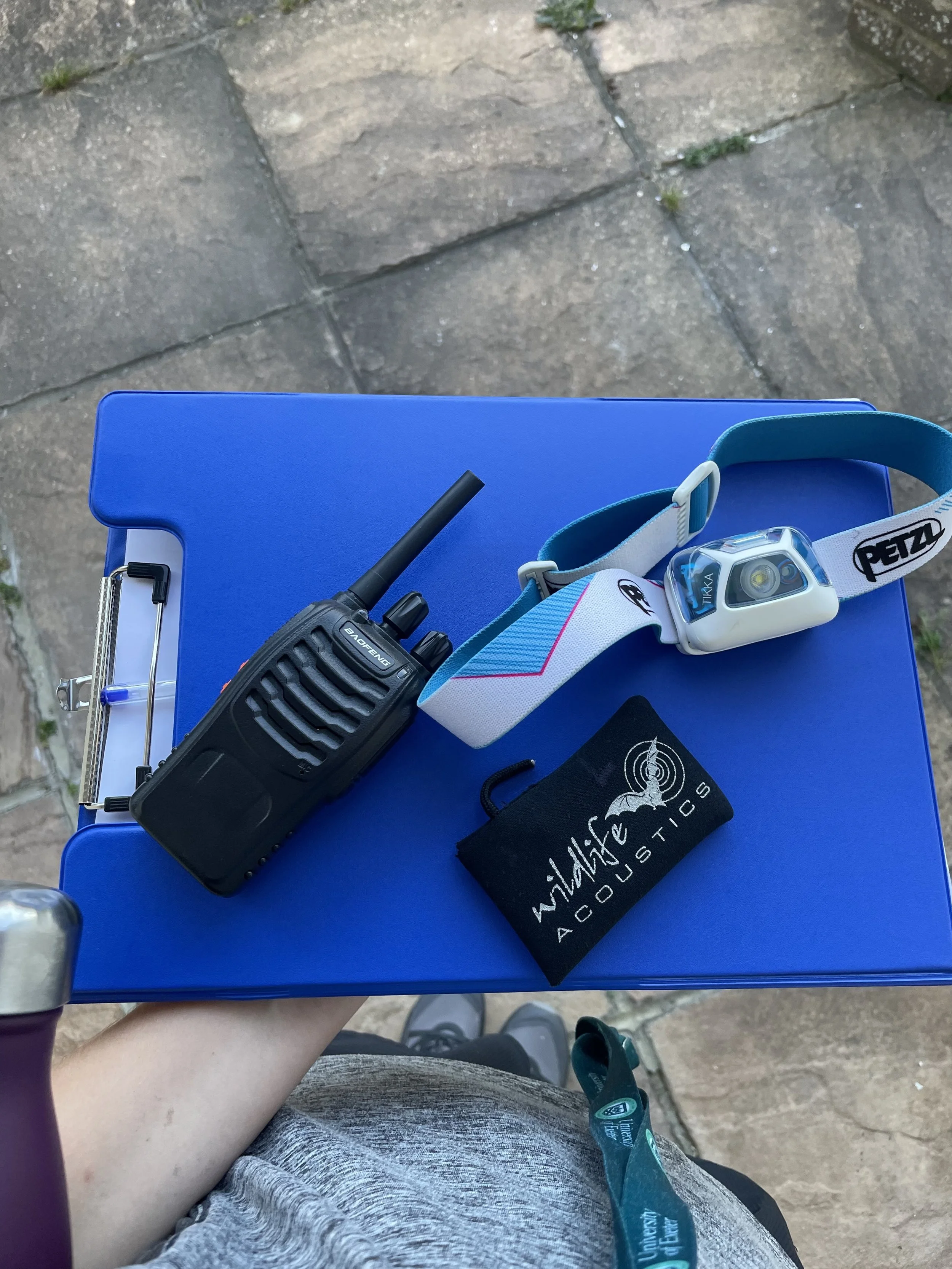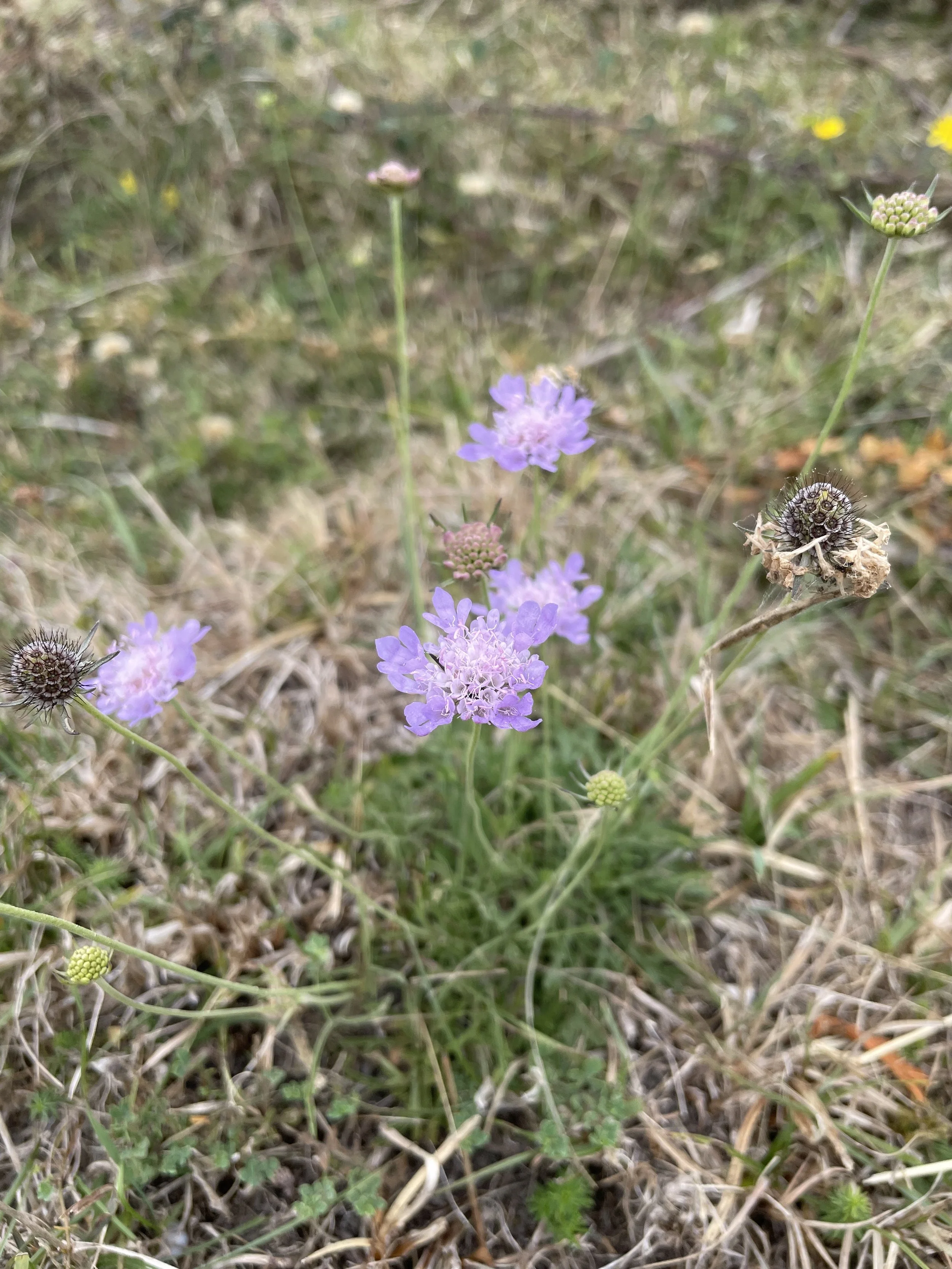Field Notes From a Placement Year: Bats, Botany & Biodiversity in July
Survey season continues into July, bringing with it some rainy days followed by some lovely spells of sunshine, often creating some ideal conditions for lots of our native wildlife.
Things learnt
On a day of slightly questionable weather in July, we spent some time updating our botany identification skills. Despite the looming rainclouds spirits were high and some of the team and I ventured out to a beautiful area of calcareous grassland, characterised by its limestone substrate, thin and fast draining soils, and typically dry sunny conditions allowing them to support a biodiverse array of flora and invertebrates. We focused on indicator species associated with this habitat, such as field and small scabious (Knautia arvensis/Scabiosa columbaria), greater knapweed (Centaurea scabiosa), ladies bedstraw (Galium verum), and round headed rampion (Phyteuma orbiculare). Not only was this a fun day, but also the perfect way to develop botany skills by practising in the field.
Besides this (and slotted in around fieldwork!) I have been taking on some report writing and have really enjoyed the experience and challenge. Despite having gained some experience and skills from university, our reports all differ at least slightly in structure and of course content, therefore the practise and feedback has been invaluable. I have found writing reports a great way to further understand and interpret the data I have been collecting throughout the season and the impact this has in different scenarios and within the influence of site-specific factors.
Monthly highlights
I have loved the practise and gained more familiarity this month with all the tasks associated with being an assistant ecologist. One of my jobs includes static bat logger deployment, a seasonal task conducted to characterise the bat species present on a site and the nature of their activity through collecting recordings of their calls. After five nights these devices are gathered, the data uploaded, and the recordings processed for further analysis later on by senior members of the team.
My bat and reptile survey calendar has continued to remain busy. I feel very lucky to be experiencing the high levels of bat species diversity we have here in Sussex. I love hearing the distinct calls on the detector and often managing to spot a noctule flying high above a site at the start of an emergence survey, as well as spotting serotines, myotis species and hearing the occasional long-eared and barbastelle call!


